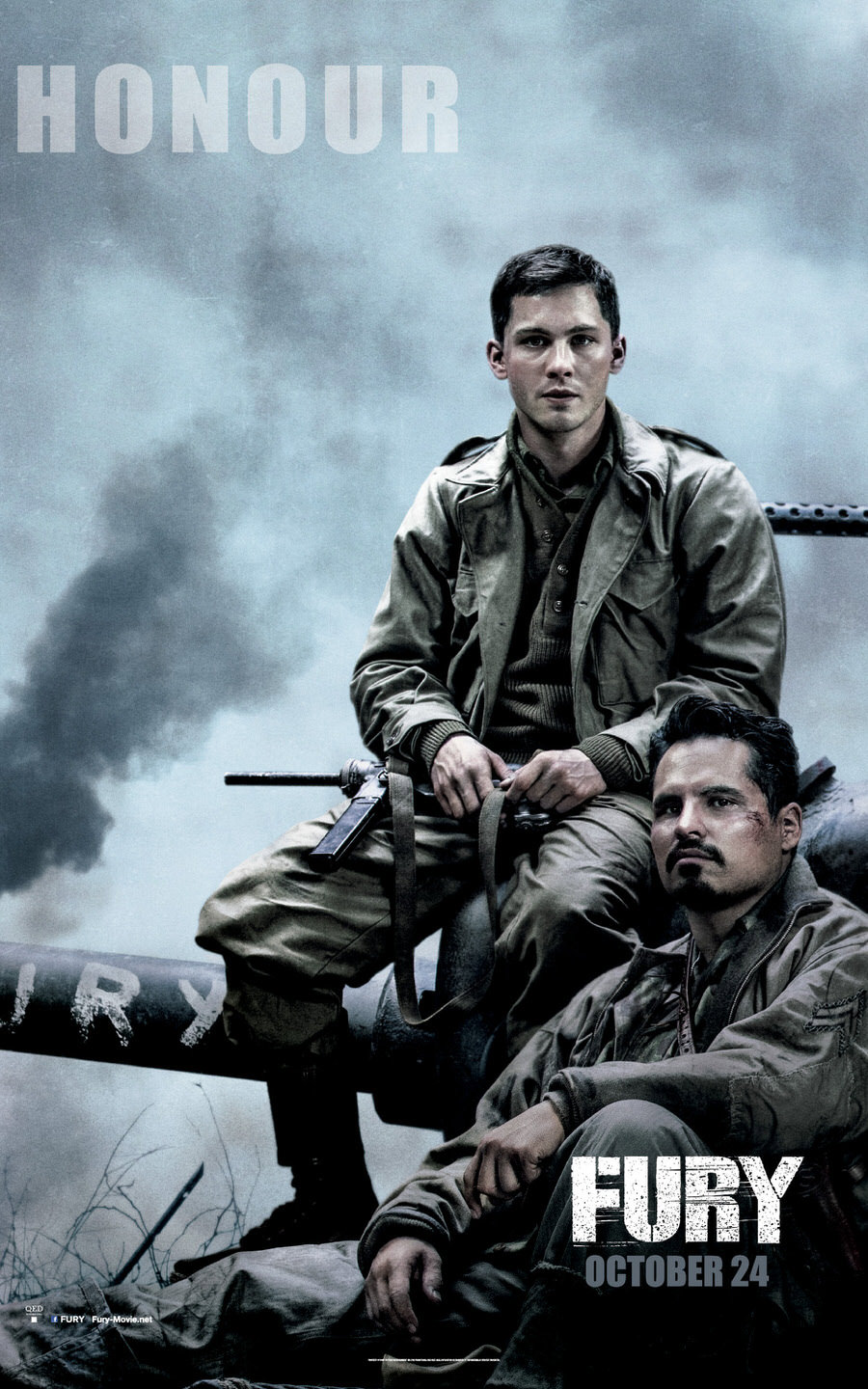Fury
 Do we need another generic WWII movie? No, but good ones are always welcome and Fury, starring Brad Pitt as Don, a weary, hardened, heroic tank commander, is worth seeing for an appreciation of the stress and horror longtime US soldiers endured in the waning days of the war.
Do we need another generic WWII movie? No, but good ones are always welcome and Fury, starring Brad Pitt as Don, a weary, hardened, heroic tank commander, is worth seeing for an appreciation of the stress and horror longtime US soldiers endured in the waning days of the war.
Germany, April 1945: Hitler has declared Total War, meaning that the entire populace, including women and children, are expected to fight back against the Allies. Pacifists are hanged by German authorities as a warning. Pitt’s crew, soldiers in the war since Africa, are beyond weary and jaded. These callous, joking, sarcastic killing machines who were once average joes should have been sent home long ago, but the war isn’t over till the fighting stops. SS troops and the German populace continue to fight and the US army is stretched thin with not enough equipment and men.
Before being sent on a series of assignments to take towns and rescue trapped soldiers, Pitt’s jaded crew is joined by a neophyte, a typist, whose experience in a tank is nil and whose inexperience can get the entire crew killed. Norman, played with subtlety by Logan Lerman is a surrogate for the audience; we experience the war through him.
The crew’s composed of a Neanderthal-like realist, played by Jon Bernthal (late from The Wolf of Wall Street), a likeable but pragmatic Michael Pena, and a deeply religious gunner played by Shia LaBeouf. LaBeouf has been the butt of jokes for some time, the result of bizarre and erratic behavior, poor film roles and poor choices (i.e. the plagiarism of work by cartoonist Dan Clowes). Having said that, his acting in Fury leaves nothing to be desired.
Our crew’s assignments, deadly enough to begin with, are made worse due to the Allied Sherman tanks being outmatched by larger, heavier German Tigers with their long range guns. Much of Fury claustrophobically takes place inside the same-named tank, in extremely close quarters; the movie does for tanks what Das Boot did for submarines.
 Fury‘s war scenes are bookends of a remarkable middle section wherein Don and Norman invade a ladies’ apartment in a captured German town. The sequence has the underlying tension of a Tarantino film and the slow precision of Visconti. It’s also complex in a way the rest of the film isn’t, and as well written for what it doesn’t show and say as for what it does.
Fury‘s war scenes are bookends of a remarkable middle section wherein Don and Norman invade a ladies’ apartment in a captured German town. The sequence has the underlying tension of a Tarantino film and the slow precision of Visconti. It’s also complex in a way the rest of the film isn’t, and as well written for what it doesn’t show and say as for what it does.
In all, Fury isn’t a great work of art. It doesn’t try to approach the depth of vision of a Stanley Kubrick or Terence Malick war film. It doesn’t have the literary breadth of Spielberg’s Band of Brothers or even Saving Private Ryan. (This is, instead, the kind of Hollywood movie where, when a major character dies, the battle comes to a convenient lull and sad, soft piano music plays alongside an angelic choir.)
What Fury does excel in is capturing the detailed, visceral, feet on the ground experience of combat, at the expense of literary themes, like the most realistic Sgt. Rock comic book imaginable. Many of Fury‘s plot points will likely seem predictable, even cliched, to someone who’s seen hundreds of war movies over many decades.
Fury, though, will be the first WWII movie some young viewers see, and the evil the Allies were up against, and the inhumanity it took to stop it, should be presented now and to all future generations.
—Michael R. Neno, 2014 Oct 21